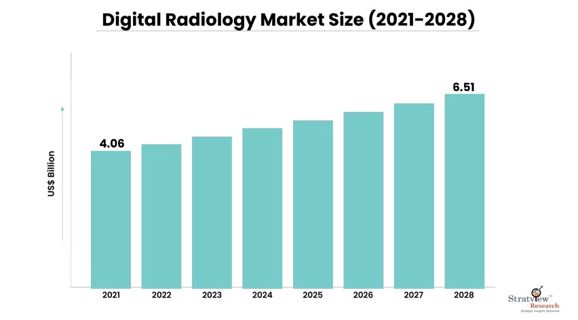"Revolutionizing Healthcare: The Impact of Digital Radiology Market Innovations"

Digital radiology has emerged as a transformative force in the field of medical imaging, revolutionizing the way diagnostic images are acquired, processed, and shared. This technology has replaced traditional film-based radiography with digital image capture, storage, and distribution, leading to improved efficiency, accuracy, and patient care.
One of the primary advantages of digital radiology is the speed at which images can be obtained and viewed. Unlike traditional methods that require film development, digital radiography provides instant access to high-quality images. This rapid imaging process not only saves time but also allows medical professionals to make quicker diagnoses, enabling timely interventions and treatment planning.
Furthermore, digital radiology offers enhanced image manipulation and analysis capabilities. Physicians can adjust image contrast, brightness, and zoom levels to focus on specific areas of interest. This level of customization aids in detecting subtle anomalies that might have been missed in conventional radiography. Additionally, computer-aided detection (CAD) software can assist radiologists in identifying potential abnormalities, thereby improving diagnostic accuracy. The digital radiology market was estimated at US$ 4.06 billion in 2021 and is expected to grow at a CAGR of 6.93% during 2022-2028 to reach US$ 6.51 billion in 2028.
The digital nature of these images also facilitates seamless sharing and collaboration among healthcare providers. Electronic Health Records (EHR) systems can integrate digital radiology images, making them readily accessible to authorized personnel across different medical departments. This streamlined information exchange enhances interdisciplinary communication and supports comprehensive patient care.
Artificial Intelligence (AI) has further elevated the capabilities of digital radiology. Machine learning algorithms can analyze vast datasets to identify patterns and trends that might not be immediately apparent to human observers. AI-driven tools, such as automated lesion detection and image enhancement, aid radiologists in making more precise diagnoses.
In the realm of patient engagement, digital radiology plays a crucial role. Patients can receive their images electronically, reducing the need for physical copies and enhancing convenience. Moreover, telemedicine initiatives have leveraged digital radiology to provide remote consultations, extending healthcare access to underserved areas and improving patient outcomes.
Despite its numerous benefits, the adoption of digital radiology also comes with challenges. Initial setup costs, including the acquisition of digital imaging equipment and software, can be significant. Additionally, ensuring data security and compliance with privacy regulations are vital considerations when transitioning to digital platforms.
In conclusion, the digital radiology market has reshaped the landscape of medical imaging. By offering speed, flexibility, and advanced analysis tools, digital radiology has not only improved diagnostic accuracy but has also facilitated more efficient patient care workflows. As technology continues to evolve and healthcare systems integrate digital solutions, the future of radiology looks increasingly digital, data-driven, and patient-centered.
Follow Amayra Shah to stay updated on their latest posts!
0 comments
Be the first to comment!
This post is waiting for your feedback.
Share your thoughts and join the conversation.
